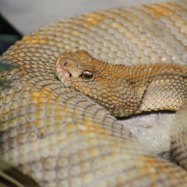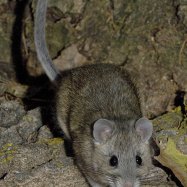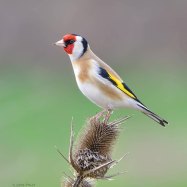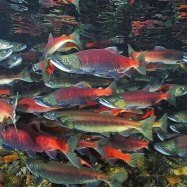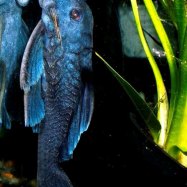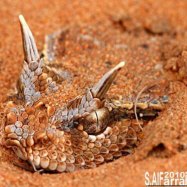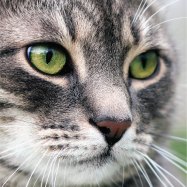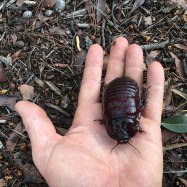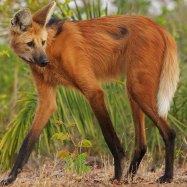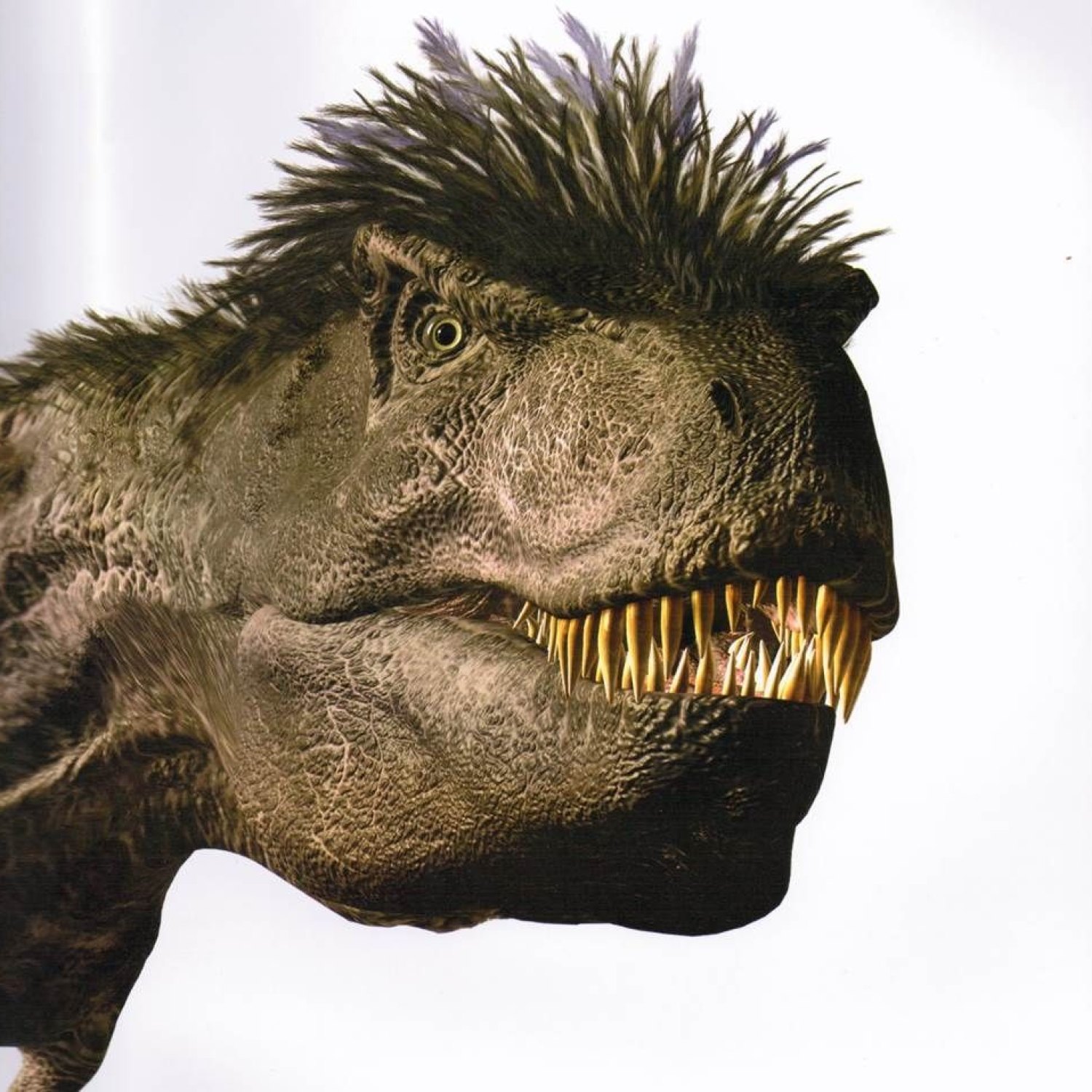
Gorgosaurus
Approximately 9-10 meters
Did you know that the Gorgosaurus, a member of the Tyrannosauridae family, roamed the lands of Alberta, Canada millions of years ago? This large and bipedal carnivore measured about 9-10 meters in length, making it a formidable predator. Its name means fierce lizard and it is closely related to the famous T-Rex. Next time you visit Alberta, keep an eye out for fossils of this impressive creature! #Gorgosaurus #Tyrannosauridae #Alberta #Canada #dinosaur #paleontology
Animal Details Summary:
Common Name: Gorgosaurus
Kingdom: Animalia
Habitat: Terrestrial
The Mighty Gorgosaurus: Master of the North American Landscapes
The world of dinosaurs evokes a sense of both fear and fascination in many of us. These ancient creatures once roamed the Earth and dominated the food chain for millions of years, until their sudden extinction around 66 million years ago. Among the most well-known and fearsome of these creatures is the Gorgosaurus. With its massive size, sharp teeth, and fierce demeanor, the Gorgosaurus has captured the imaginations of people for decades Gorgosaurus. In this article, we will delve into the amazing world of the Gorgosaurus, a formidable predator that once ruled the North American landscapes.The Basics: Scientific Classification
Let's start by getting to know the Gorgosaurus better through its scientific classification. The Gorgosaurus belongs to the Animalia kingdom, the largest group of living organisms on our planet. It also falls under the chordata phylum, a group of animals with a spinal cord and a central nervous system. In terms of class, the Gorgosaurus is categorized as reptilia, which includes all living and extinct reptiles. Moving further down the classification, we come to the order saurischia, a group of reptiles with a hip structure that resembles that of modern birds. And finally, the Gorgosaurus belongs to the tyrannosauridae family, which consists of the most well-known and fearsome dinosaurs. The scientific name for the Gorgosaurus is Gorgosaurus libratus, with "Gorgo" meaning terrible and "saurus" meaning lizard in Greek.Appearance and Physical Characteristics
The Gorgosaurus was a massive creature, measuring approximately 9-10 meters in length, making it one of the largest carnivorous dinosaurs Gray Catbird. It was also estimated to weigh around 2-3 tons, making it a formidable predator on the land. The body of the Gorgosaurus was characterized by a large, muscular frame, with a narrow waist and powerful hind legs. Its front limbs were relatively small in comparison, with tiny, clawed fingers that aided in grasping and tearing apart its prey. The Gorgosaurus had a large head, with a long, powerful jaw filled with sharp teeth, perfect for crushing and eating its prey.Habitat and Geographical Distribution
The Gorgosaurus were primarily terrestrial animals, meaning they lived and roamed on land. This was evident in their strong, muscular legs and their well-developed sense of smell and vision, which aided them in hunting for prey on the ground. As their name suggests, the Gorgosaurus were native to North America, specifically in the regions of Canada and the United States. Fossils of this mighty predator have only been found in Alberta, Canada, making it a significant part of Canadian paleontology.Dietary Habits – A Carnivore's Lifestyle
As is the case with most predators, the Gorgosaurus were carnivorous, meaning their diet primarily consisted of meat. These fierce creatures were apex predators, meaning they were at the top of the food chain and had no natural predators. Their massive size and sharp teeth allowed them to hunt and prey on a variety of animals. Some of their prey included other dinosaurs such as the hadrosaurs, as well as smaller predators like the velicoraptors. The prey was hunted using both their powerful jaws and strong hind legs, making them agile and deadly hunters.Coloration and Camouflage
The Gorgosaurus had a brilliant adaptation to its environment – its coloration. The skin of the Gorgosaurus was adorned with various shades of brown and gray, which helped it to blend into its surroundings. This provided them with excellent camouflage while hunting, making it easier for them to surprise their prey. This ability to hide in plain sight was crucial for survival, as it allowed them to remain undetected by both its prey and potential predators.The Extinction of the Gorgosaurus
Despite being one of the most fearsome predators to roam the Earth, the Gorgosaurus, along with many other dinosaurs, met its demise around 66 million years ago. Scientists believe that it was due to a catastrophic event – an asteroid hitting the Earth, causing a massive disruption in the environment and food chain. This event, known as the Cretaceous–Paleogene extinction event, led to the extinction of 75% of all living species, including the Gorgosaurus.The Legacy of the Gorgosaurus
Although the Gorgosaurus has been long extinct, its legacy lives on through the fossils discovered by paleontologists. The examination of these fossils has provided valuable insights into the life and habits of these magnificent creatures, which continue to fascinate and intrigue people to this day. In addition, the Gorgosaurus has also become a popular subject in popular culture, with its fearsome appearance making it a popular subject in books, movies, and video games.The Importance of Studying Ancient Creatures
The study of ancient creatures like Gorgosaurus is essential not just for the advancement of science and knowledge but also for our understanding of the world we live in. By studying and learning more about these creatures, we can better understand their relationship with the environment and how it influenced their evolution and ultimate extinction. This knowledge can also help inform our understanding of current environmental challenges and how to better protect our planet and its inhabitants.Conclusion
The Gorgosaurus was a massive and formidable predator that once roamed the North American landscapes. With its massive size, sharp teeth, and fearsome appearance, it was a force to be reckoned with among the ancient creatures. Its legacy continues to captivate and fascinate people to this day, shedding light on our planet's rich and diverse history. As we continue to learn more about these ancient creatures, we gain a greater understanding of our world and our place in it.

Gorgosaurus
Animal Details Gorgosaurus - Scientific Name: Gorgosaurus libratus
- Category: Animals G
- Scientific Name: Gorgosaurus libratus
- Common Name: Gorgosaurus
- Kingdom: Animalia
- Phylum: Chordata
- Class: Reptilia
- Order: Saurischia
- Family: Tyrannosauridae
- Habitat: Terrestrial
- Feeding Method: Carnivorous
- Geographical Distribution: North America
- Country of Origin: Canada and United States
- Location: Alberta, Canada
- Animal Coloration: Varied shades of brown and gray
- Body Shape: Large and bipedal
- Length: Approximately 9-10 meters

Gorgosaurus
- Adult Size: Same as length
- Average Lifespan: Unknown, estimated to be 20-30 years
- Reproduction: Sexual
- Reproductive Behavior: Unknown
- Sound or Call: Unknown
- Migration Pattern: No evidence of migration
- Social Groups: Possibly lived in family groups
- Behavior: Aggressive predator
- Threats: Extinction due to natural causes
- Conservation Status: Extinct
- Impact on Ecosystem: Top predator
- Human Use: Studied by scientists
- Distinctive Features: Large size and sharp teeth
- Interesting Facts: Had a similar appearance to Tyrannosaurus rex
- Predator: None
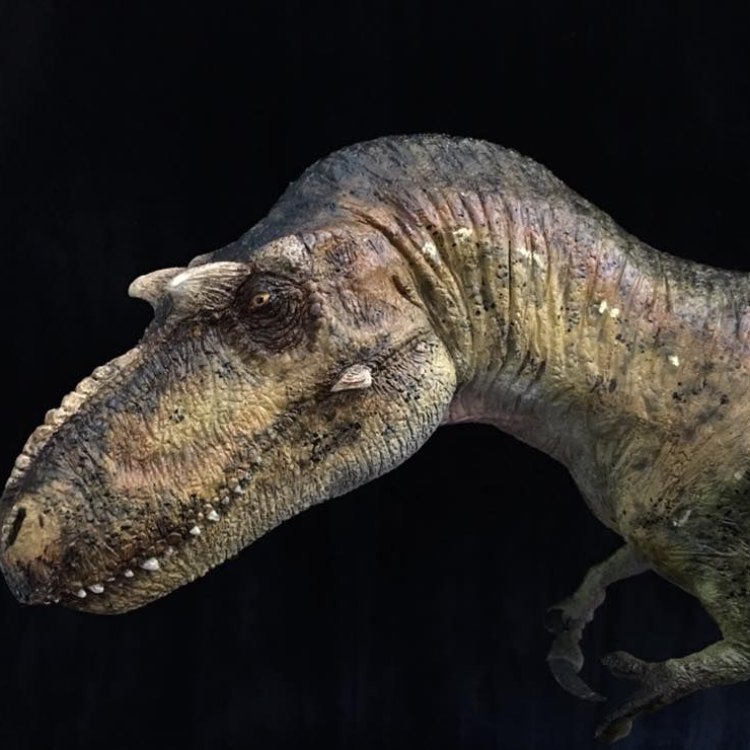
Gorgosaurus libratus
Gorgosaurus, which means "fierce lizard" in Greek, was a genus of theropod dinosaur that lived between 76 and 66 million years ago. It belonged to the Tyrannosauridae family, which also includes the famous Tyrannosaurus rex. Gorgosaurus was first discovered in the late 19th century in Alberta, Canada, by famous paleontologist Lawrence Lambe. Since then, several other fossils have been found in North America, including Canada and the United States, indicating that this mighty predator had a wide distribution.
One of the most distinctive features of the Gorgosaurus was its large size. It could reach a length of over 30 feet, with some estimates suggesting that it could be even longer. Its height was around 9 to 10 feet, making it a formidable presence on the land. Gorgosaurus had long and powerful hind legs, which allowed it to run at an incredible speed of up to 40 miles per hour Golden Tortoise Beetle. It also had short, muscular arms with sharp claws that were used to grab and hold onto its prey.
The average lifespan of Gorgosaurus is still unknown, but it is estimated to be between 20 to 30 years, similar to other large theropod dinosaurs. Reproduction in this species was sexual, with males and females mating to produce offspring. However, the exact reproductive behavior of Gorgosaurus is still a mystery, as there is no physical evidence to suggest their courtship rituals or breeding patterns.
Another aspect that remains unknown is the sound or call of Gorgosaurus. Unlike some other dinosaurs, there is no evidence of this species producing any vocalizations. However, it is possible that they might have communicated through visual displays or body language, like other theropods.
Gorgosaurus was a solitary predator, and there is no evidence of a migration pattern. It is believed that they remained in a specific territory, hunting for prey and defending their territory from other predators. However, there is some evidence that suggests Gorgosaurus might have lived in family groups, similar to modern-day wolves. This behavior is common among tyrannosaurs, and it is possible that Gorgosaurus also had a complex social structure.
As an aggressive predator, Gorgosaurus was at the top of the food chain during its time. Fossils of this species have been found with injuries and scars, indicating that they were often in violent encounters with other dinosaurs. They were skilled hunters, preying on herbivorous dinosaurs like Edmontosaurus and small ceratopsians like Centrosaurus. With its sharp teeth, it could easily tear through the tough skin and muscles of its prey, making it one of the most efficient killers of its time.
However, despite being a dominant predator, Gorgosaurus faced several threats during its existence. As with any other species, natural causes such as diseases, injuries, and old age could have resulted in the death of individuals. Additionally, the changing climate and competition from other predators could have also played a role in their extinction. It is believed that the decline of their main prey species, the hadrosaurs, also contributed to their eventual extinction.
According to the International Union for Conservation of Nature (IUCN), Gorgosaurus is listed as extinct, and its conservation status is not applicable. This status is not surprising, as all dinosaurs went extinct millions of years ago. However, despite their extinction, they have left a significant impact on the ecosystem. As top predators, Gorgosaurus played a crucial role in maintaining the balance of their environment. Without their presence, there could have been a rise in the population of herbivorous dinosaurs, leading to the depletion of vegetation and potentially causing a ripple effect on other species.
In modern times, Gorgosaurus may only exist in the form of fossils and scientific studies, but it has been an essential subject of research for paleontologists. Studying Gorgosaurus and other dinosaurs has helped scientists gain a better understanding of the Earth's ancient ecosystems and how life evolved over time. By analyzing their bones and behaviors, researchers can paint a vivid picture of what the world looked like when these magnificent creatures roamed it.
One of the most intriguing facts about Gorgosaurus is that it had a similar appearance to its more famous cousin, Tyrannosaurus rex. In fact, the two are often referred to as "cousins" in the world of paleontology. Both had massive bodies, short arms, and sharp teeth, and their fossils have been found in the same locations. However, they also had some differences, such as Gorgosaurus having longer legs and a slightly smaller head. Studying these similarities and differences can provide valuable insights into the evolutionary relationships of these creatures.
While Gorgosaurus was a fierce predator, interestingly enough, it did not have any known predators itself. This is not a common situation in the animal kingdom, where almost every species has at least one natural enemy. However, due to its massive size and being a top predator, Gorgosaurus did not face any threats from other animals during its time on Earth.
In conclusion, Gorgosaurus was a fearsome and mighty predator that ruled the land during the late Cretaceous period. With its large size, sharp teeth, and aggressive behavior, it was an apex predator that had a significant impact on the ecosystem. Despite their eventual extinction, Gorgosaurus and other dinosaurs continue to fascinate us and provide valuable insights into the earth's ancient history. Their legacy lives on through scientific research and the popular culture they have inspired, making them some of the most remarkable creatures to have ever walked on our planet.
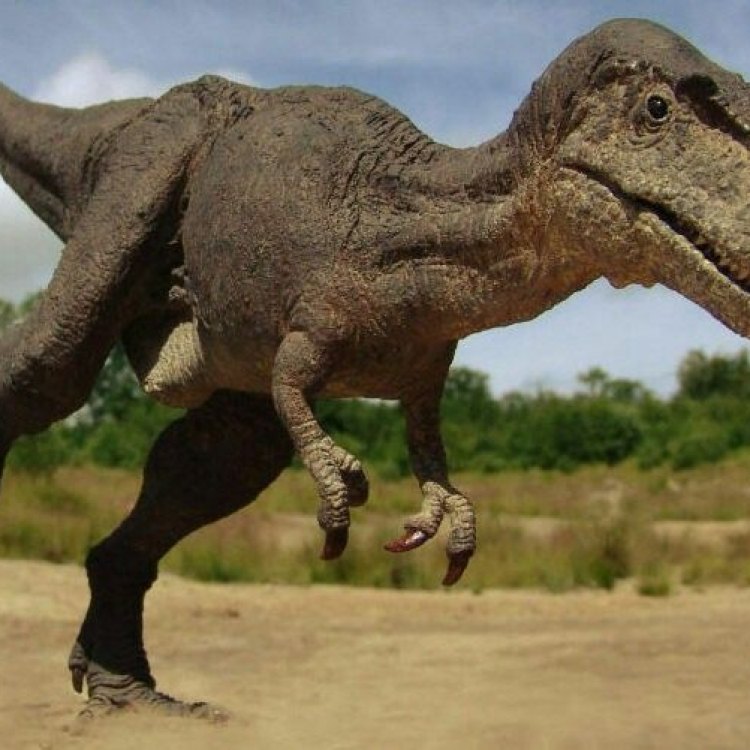
The Mighty Gorgosaurus: Master of the North American Landscapes
Disclaimer: The content provided is for informational purposes only. We cannot guarantee the accuracy of the information on this page 100%. All information provided here may change without prior notice.

